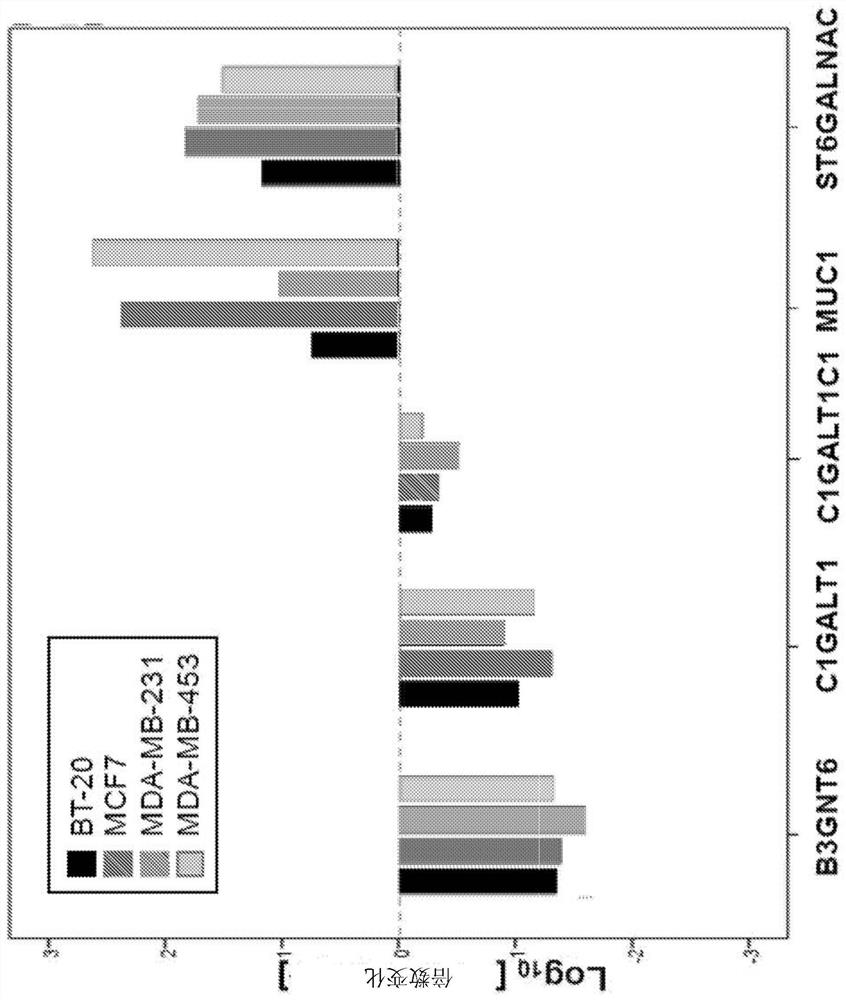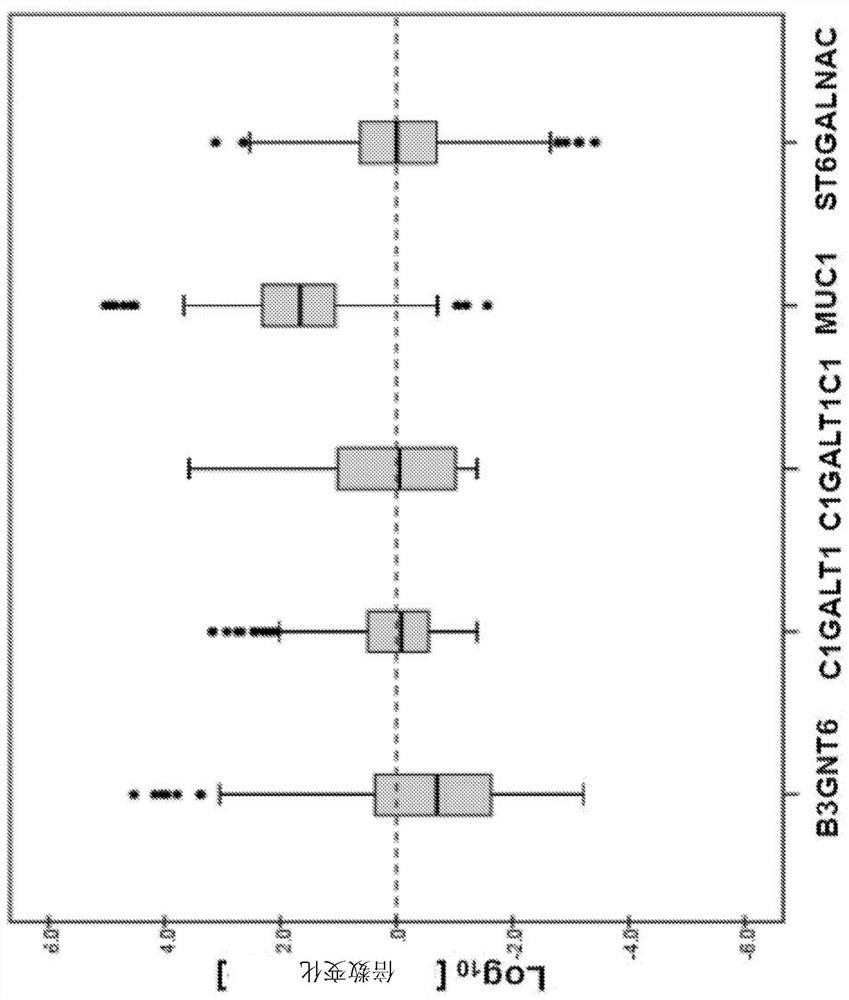Tn-muc1 chimeric antigen receptor (CAR) t cell therapy
A chimeric antigen receptor, antigen technology, applied in the direction of antibody medical components, NGF-receptor/TNF-receptor superfamily, receptors/cell surface antigens/cell surface determinants, etc.
- Summary
- Abstract
- Description
- Claims
- Application Information
AI Technical Summary
Problems solved by technology
Method used
Image
Examples
Embodiment 1
[0645] Example 1: Gene expression analysis of MUC1 and associated glycosyl transferase in breast cancer - breast cancer sample TCGA gene expression analysis
[0646]One known mechanism for abnormal O-glycosylation on the surface of the tumor is a mutation or apparent genetic silence of the associated glycosyl transferase, but also proposes another mechanism: excessive expression of glycin, such as MUC1, thus Sato the cytochrome machine. The study of TN-MUC1 expression analysis in breast cancer is initiated by interrogating whether MUC1 or any direct O-glycosyltransferase (and molecular companion protein C1Galt1c1) has different gene expression in group samples of TCGA. . When the patient is layered according to the race, lymph node, transfer state, or the overall cancer phase, the gene expression is not different (all P> 0.05). The expression of MUC1 varies from tumor phase, of which T1 and T2 tumors are expressed below T3 and T4 tumor expression (P <0.001). In addition to the T...
Embodiment 2
[0647] Example 2: MUC1 and associated glycosyl transferase in breast cancer cell line and matching normal and breast cancer tissue Genetic expression analysis in the product
[0648] The gene expression of MUC1 and associated O-glycosyl transferase was analyzed in several commercially available breast cancer cell lines having different HR or HER2 expression states. The MCF10A is an HR-non-invasive breast epithelial cell line. MCF7 is HR + Her2 - Breast cancer cell line. BT20, MDA-MB-231 and MDA-MB-453 are HR-HER2-breast cancer cell lines. All B3GNT6 (MFC 0.04), C1Galt1 (MFC 0.07) and C1Galt1C1 (0.44) of C1Galt1 (0.44) were low, and MUC1 (142.85) and ST6Galnac1 (61.06) were highly expressed. Figure 2A This is consistent with the two mechanisms of abnormal O-glycan expression. Similarly, the B3GNT6 (MFC 0.16) of breast tumor samples is low and the expression of MUC1 (MFC 31.62) is high compared to matching normal breast tissue. Figures 7A-7C . C1Galt1 (MFC 0.93), C1Galt1C1 (MFC 0....
Embodiment 3
[0649] Example 3: TN-MUC1 glycosyl epitope specifically expressed in breast cancer rather than in adjacent normal breast tissue Specific expression - Immunohistochemistry (IHC) analysis in normal and malignant breast tissue
[0650] Use 5E5 anti-TN-MUC1 antibody to quantify TN-MUC1 sugar graphs by IHC ( Figure 3A with 3B . There is a normal adjacent breast tissue in 7 in 52 breast tumor tissue slices. Tumor epithelial cells were strongly dyed by TN-MUC1, while adjacent normal breast epithelial cells were lacking on TN-MUC1 staining or under a significantly lower H fraction. The average H fraction of tumor tissue was 183.8 ± 95.7, and the average H fraction of normal breast tissue was 34.9 ± 32.8 (P 0.05).
PUM
 Login to View More
Login to View More Abstract
Description
Claims
Application Information
 Login to View More
Login to View More - R&D
- Intellectual Property
- Life Sciences
- Materials
- Tech Scout
- Unparalleled Data Quality
- Higher Quality Content
- 60% Fewer Hallucinations
Browse by: Latest US Patents, China's latest patents, Technical Efficacy Thesaurus, Application Domain, Technology Topic, Popular Technical Reports.
© 2025 PatSnap. All rights reserved.Legal|Privacy policy|Modern Slavery Act Transparency Statement|Sitemap|About US| Contact US: help@patsnap.com



